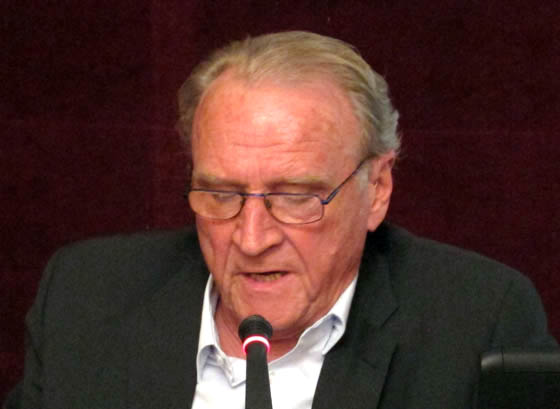“Interacting with the Youth Is of Utmost Importance,” Insists Jorgensen.

Hemming Jorgensen (born 1939) graduated as a civil engineer in 1962 (MSc Technical University of Denmark), as a business economist in 1974 (B. Comm. Copenhagen Business School), and an Iranologist in 2010 (PhD University of Copenhagen). His engineering career included jobs in Switzerland, Iran, Denmark and Indonesia. For 15 years he was technical advisor and subsequently project director until retirement at the European Investment Bank. He worked as a senior consultant for various international agencies before embarking on the Iranian Project at the University of Copenhagen.
AVA Diplomatic’s Exclusive Interview with Hemming Jorgensen, Ph.D., a Professor at the University of Copenhagen.
Interview by Mohammadreza Nazari
When Iran becomes the topic of most discussions, lots of things about it are prone to go amiss. In your opinion, what is the most significant aspect of Iranology which has been ignored thus far?
As an Iranologist, I’ve strived to play a key role in this field. I studied archeology, and feel that’s my duty to cover the uncovered areas therein. I have also published a book in this regard.
Do you believe one can know the Iran of the present time by only knowing its ancient civilization and culture?
That’s a fairly tough question. I’m not a political person and work in archeology. What concerns me is that Iran doesn’t take good care of its cultural heritage and treasure, and its department of cultural heritage, too, has acted quite inactively.
How much should an Iranologist or archeologist be familiar with the ancient civilization of his target country?
An archeologist should be well acquainted with the area you mentioned, as archeology is a field which deals with people, and requires cultural study. For instance, building water storages and aqueducts are solely dependent on the lifestyle of the people of a society.
You are a person of knowledge about Iran’s developments all through the history; how different do you find the current and the oil versions of Iran?
The old Iran is gradually dying off. Then, there were aqueducts, but now there is none. The depth of water pumping systems used to be only 30 meters, which has now risen to over 200 meters. Lake Urmia is also drying out.
What are your suggestions to your students to know more of Iran? What parameters should they put into consideration?
First and foremost, there are social relations and interactions with the youth generation of Iran. The new generation is heavily in contact with the internet; however, direct contact is of more essence, in compare, from which they can learn a great lot.
Is that you only recommendation to your own students?
No, we should also work on Iran’s current developments. Iran stands at a far more distant point now when compared to the west, of course, and it has to make up for it.




